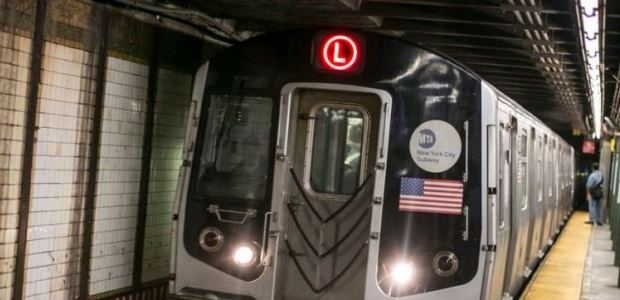
L Trains' Shutdown Averted in NYC
MTA's L Train service provides 400,000 daily rides. The planned repair work on the L Train Tunnel to repair damage caused by Hurricane Sandy could be completed on nights and weekends only, with a single tube providing continued service in both directions during work periods.
New York City's Metropolitan Transportation Authority has accepted the recommendations of a panel of engineering experts who concluded that a complete closure of the L Train Tunnel for repair work is unnecessary. Their report, which followed review and analysis by the deans and faculty of the Columbia University and Cornell University engineering schools, recommends a series of innovative engineering methods to streamline the required work and limit the impact on L Train service, which provides 400,000 daily rides.
The work could be completed on nights and weekends only, with a single tube providing continued service in both directions during work periods. The plan has been presented to and reviewed by the MTA, and it has been confirmed that the report's goals are achievable within a 15-20 month timeframe. The MTA still plans to implement additional subway service where needed, including on the G, M, and 7 Trains.
"We appreciate the dedication and the analysis provided by this group of experts," said Acting MTA Chair Fernando Ferrer. "We have a shared goal in this effort: to make sure New Yorkers are subjected to the least possible disruptions as a result of this necessary repair work. With the L Project, and all our major projects, we're consistently looking for new and innovative methods, and the guidance and recommendations we have received today will ease the strain on customers and help us ensure we are providing a consistently reliable service."
Project recommendations are to:
- Implement a new power and control system design
- Implement racking system design to suspend cables on side of tunnel
- Decouple cable system housing from benchwallJacket cables with low-smoke, zero-halogen fireproof material
- Abandon all old cables in benchwall, and leave benchwall unless structurally compromised and fortify using fiber-reinforced polymer
- Install smart sensor systems to monitor benchwall integrity
- Increase flood resilience measures and enhance public safety
The benefits to these recommendations include achieving all functional outcomes, while reducing work and allowing simultaneous, not sequential, execution of critical tasks. The racking system will allow greater access to cables for inspection or future upgrades, and the smart sensor system will allow for monitoring on a continuous basis rather than a periodic basis. MTA said this new system design approach could be applied to other projects, such as the Second Avenue Subway Phase 2 and Hudson River Train Tunnels.
"The L Train Tunnel project gives us the opportunity to integrate technologies and methods that have never been used before in a tunnel rehabilitation project, putting New York in a leadership position when it comes to building 21st century infrastructure," the panel of engineering experts said in a joint statement. "We have proposed a forward-thinking, innovative approach that relies on state-of-the-art technologies to rehabilitate this century-old tunnel. We were grateful to have this extraordinary opportunity to work with the MTA to lead the way in infrastructure design and development, and we hope this solution can set an example for other projects in New York and around the world."
In 2012, the L Train Tunnel (also known as the Canarsie Tunnel), which is 1.5 miles long and runs under the East River, was filled with corrosive salt water due to Superstorm Sandy. This damaged critical elements, including the Circuit Breaker House, power cables, and the cement benchwall that holds and protects the cables. Repair work was planned to begin in the spring of 2019, including the time-consuming process of removing – by hand – and replacing all 32,000 feet of benchwall, as well as installing 126,000 feet of power cable and 176,000 feet of communications cable inside the benchwall. This work would have shut down L service through the tunnel for 15 months.
The expert review team established in December 2018 by New York Gov. Andrew M. Cuomo consulted with MTA and New York City Transit, the project contractors, and conducted their own intensive analysis and performed hundreds of hours of pro bono work. The panel members considered rail tunnels in cities around the world, such as Hong Kong, London, and Riyadh, in order to implement the most efficient design in New York City. Among the findings, the team found that other modern tunnel designs under construction do not use benchwalls to protect cables, MTA reported.